Frederick Ashton
Birth : 1904-09-17, Guayaquil, Ecuador
Death : 1988-08-18
History
From Wikipedia, the free encyclopedia.
Sir Frederick William Mallandaine Ashton OM, CH, CBE (17 September 1904 – 18 October 1988) was a leading international dancer and choreographer. He is most noted as the founder choreographer of The Royal Ballet in London, but also worked as a director and choreographer of opera, film and theatre revues.
Description above from the Wikipedia article Frederick Ashton, licensed under CC-BY-SA, full list of contributors on Wikipedia

Choreographer
The Sleeping Beauty holds a very special place in The Royal Ballet’s heart and history. It was the first performance given by the Company when the Royal Opera House reopened at Covent Garden in 1946 after World War II. In 2006, this original staging was revived and has been delighting audiences ever since. Frederick Ashton famously cited the pure classicism of Marius Petipa’s 19th-century ballet as a private lesson in the atmospheric art and craft of choreography. Be swept away by Tchaikovsky’s ravishing music and Oliver Messel’s sumptuous designs with this true gem from the classical ballet repertory.
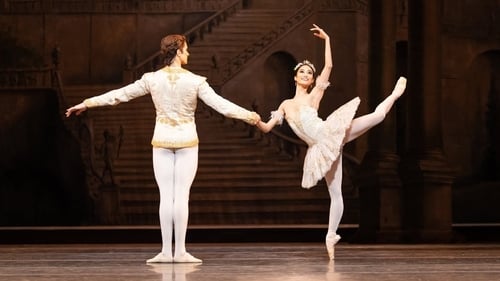
Choreographer
The wicked fairy Carabosse is furious she wasn’t invited to Princess Aurora’s christening. She gives the baby a spindle, saying that one day the Princess will prick her finger on it and die. The Lilac Fairy makes her own christening gift a softening of Carabosse’s curse: Aurora will not die, but will fall into a deep sleep, which only a prince’s kiss will break. The masterful 19th-century choreography of Marius Petipa is combined with sections created for The Royal Ballet by Frederick Ashton, Anthony Dowell and Christopher Wheeldon. Recorded live as part of the Royal Opera House Live Cinema Season 2019/20 with encore screenings broadcast online during the #OurHousetoYourHouse programme.
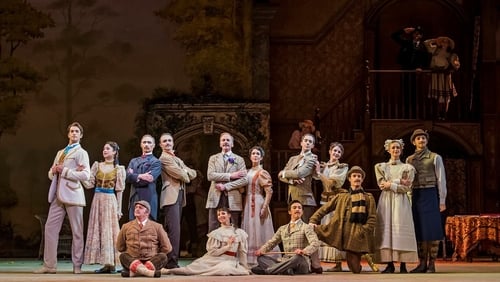
Choreographer
From The Royal Ballet’s classical origins in the works of Petipa, to the home-grown choreographers who put British ballet on the world stage, this mixed programme highlights the versatility of the Company. Petipa’s Raymonda Act III is Russian classical ballet summarized in one act, full of sparkle and precise technique, while Ashton’s Enigma Variations is quintessentially British in every way – from its score by Elgar and period designs by Julia Trevelyan Oman, to Ashton’s signature style, the essence of British ballet. Concerto, MacMillan’s fusion of classical technique with a contemporary mind, completes a programme that shows the breadth of the Company’s heritage.

Choreographer
The Royal Ballet performs Tchaikovsky's classic ballet, choreographed by Liam Scarlett and starring Marianela Nunez as Odette/Odile and Vadim Muntagirov as Prince Siegfried.
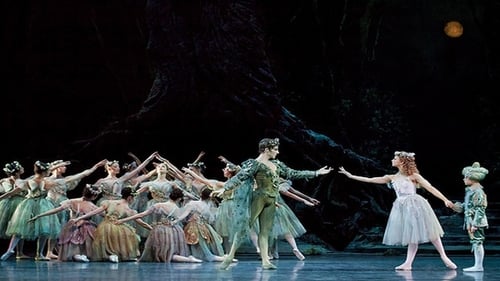
Choreographer
The Dream: Frederick Ashton’s delightful interpretation of Shakespeare’s A Midsummer Night’s Dream is a classic of The Royal Ballet’s repertory. Symphonic Variations: Ashton was inspired to create a ballet on the four seasons – but as he began to choreograph he refined and purified until the ballet shook off its original meaning, emerging as an abstract celebration of movement and physicality. Marguerite and Armand: Marguerite, a Parisian courtesan, lies on her deathbed. She recalls her tragic love affair with Armand in a series of feverish flashbacks.

Creative Consultant
The Sleeping Beauty holds a special place in The Royal Ballet’s repertory. It was the ballet with which the Company reopened the Royal Opera House in 1946 after World War II, its first production at its new home in Covent Garden. Margot Fonteyn danced the role of the beautiful Princess Aurora in the first performance, with Robert Helpmann as Prince Florimund. Sixty years later, in 2006, the original 1946 staging was revived by then Director of The Royal Ballet Monica Mason and Christopher Newton, returning Oliver Messel’s wonderful designs and glittering costumes to the stage.

Choreographer
Frederick Ashton's La Fille mal gardée (The Wayward Daughter) is one of the choreographer's most joyous and colourful creations. Inspired by his love for the Suffolk countryside, the ballet is set on a farm and tells a story of love between Lise, the daughter of Widow Simone, and Colas, a young farmer. It contains some of Ashton's most stunning choreography, most strikingly in the series of energetic pas de deux that express the youthful passion of the young lovers, performed here by Natalia Osipova and Steven McRae. The ballet is laced with exuberant good humour, and elements of national folk dance, from dancing chickens and a maypole dance to a Lancashire clog dance for Widow Simone, performed by Philip Mosley.

Choreographer
This DVD showcases Frederick Ashton's version widely regarded as the definitive interpretation initially devised for the London Royal Ballet in 1960 and first screened on the BBC over the Christmas period of 1962. This performance featured the cast of the 1960 original, with Nadia Nerina in a role that Ashton created with her in mind. Nerina's "joyous, soaring skill, which is Lise's signature (Financial Times) and David Blair's technical and interpretative genius in the role of Colas are perfectly offset by Stanley Holden's hilarious travesti turn as Widow Simone, and Alexander Grant, who brings pathos and humour to the character of Alain.

Choreographer
The Tales of Beatrix Potter is a 1992 ballet adapted for stage by Anthony Dowell from the 1971 film The Tales of Beatrix Potter that was choreographed by Frederick Ashton that in turn was based on the children's books by Beatrix Potter.
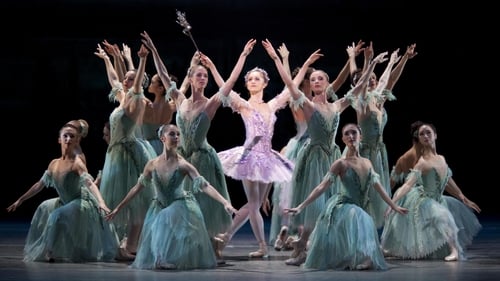
Choreographer
Tchaikovsky's The Sleeping Beauty is one of the best loved of classical ballets, combining in a single work all the enchantment and virtuosity that ballet has to offer. The royal court, the panoramic journey of the Prince to the overgrown castle, and the great celebratory dances of the happy ending (in which other famous fairy-tale figures appear) are all brought to life by the luscious designs of this celebrated production, created in 1946 for The Royal Ballet. The inspired performances of its revival for the 75th anniversary of the Company in 2006, together with a magnificent High Definition recording, make this a superb tribute to The Royal Ballet's unique style and visual splendour.

Choreographer
Darcey Bussell and Roberto Bolle star in Frederick Ashton's Sylvia, restored to the splendour of its elegant and opulent three-act form for the 75th anniversary celebrations of The Royal Ballet. With origins in Greek mythology, Sylvia was loved by Aminta, abducted by Orion and eventually rescued by Eros. Recorded live at the Royal Opera House, Covent Garden on 1st and 5th December 2005.

Story
Ever since its triumphant premiere in 1960, Frederick Ashton's La Fille mal gardee has been treasured as one of his happiest creations - his artistic tribute to nature, and an expression of his feelings for his beloved Suffolk countryside. Marianela Nunez and Carlos Acosta perfectly portray the young lovers Lise and Colas, determined to thwart the plans of Widow Simone to marry off her wayward daughter to Alain, the simple son of wealthy Farmer Thomas. Osbert Lancaster's colourful, picture-book designs, along with Ferdinand Herold's tuneful score, arranged by John Lanchbery, provide the perfect setting for Ashton's blissfully bucolic ballet, complete with haywain, pony, maypole and ribbons, a cockrel and his chickens and, of course, the famous clog dance, here wonderfully led by William Tuckett as the irascible but lovable Widow Simone.

Choreographer
Ever since its triumphant premiere in 1960, Frederick Ashton's La Fille mal gardee has been treasured as one of his happiest creations - his artistic tribute to nature, and an expression of his feelings for his beloved Suffolk countryside. Marianela Nunez and Carlos Acosta perfectly portray the young lovers Lise and Colas, determined to thwart the plans of Widow Simone to marry off her wayward daughter to Alain, the simple son of wealthy Farmer Thomas. Osbert Lancaster's colourful, picture-book designs, along with Ferdinand Herold's tuneful score, arranged by John Lanchbery, provide the perfect setting for Ashton's blissfully bucolic ballet, complete with haywain, pony, maypole and ribbons, a cockrel and his chickens and, of course, the famous clog dance, here wonderfully led by William Tuckett as the irascible but lovable Widow Simone.

Choreographer
The Sleeping Beauty unites Petipa's demanding but enchanting choreography with Tchaikovsky's wonderful score in one of the best-loved of all classical ballets. This recording of Anthony Dowell's 1994 production for The Royal Ballet, with designs by Maria Björnson, features an outstanding cast led by Viviana Durante as a radiant Princess Aurora. She is partnered by Zoltán Solymosi as Prince Florimund and Anthony Dowell himself is a glitteringly elegant embodiment of evil as the wicked fairy Carabosse. The Royal Ballet, exceptional as ever, is accompanied by the Orchestra of the Royal Opera House, deftly conducted by Barry Wordsworth.

Choreographer
As young dancers, they were best friends and fierce rivals. Deedee left the stage for marriage and motherhood, while Emma would become an international ballet icon. But when Deedee's teenage daughter is invited to join Emma's dance company and begins an affair with a young Russian star, the two women are forced to confront the choices they've made, the resentments they've hidden and the emotional truths they must face at the turning point.

Choreographer
The Royal Ballet Company brings Squirrel Nutkin, Tom Thumb, Hunca Munca, Jemima Puddle-Duck, Jeremy Fisher, Pigling Bland, and Pigwig to the screen doing pirouettes and pas de deux in this filmed ballet production directed by Reginald Mills. The film more properly belongs, however, to choreographer Frederick Ashmore, composer John Lanchbery, and costume designer Rostislav Douboujinsky. This literal adaptation concerns the shy Beatrix Potter and how, when all of the toy animals in her room come to life, she emerges from her shell and begins to enjoy life. Sequences include a rowdy dance with Tom Thumb and Hunca Munca destroying a collection of plaster food, a midnight pas de deux between Pigling Bland and Pigwig, and a corps de ballet of dancing mice.

Mrs. Tiggy-Winkle
The Royal Ballet Company brings Squirrel Nutkin, Tom Thumb, Hunca Munca, Jemima Puddle-Duck, Jeremy Fisher, Pigling Bland, and Pigwig to the screen doing pirouettes and pas de deux in this filmed ballet production directed by Reginald Mills. The film more properly belongs, however, to choreographer Frederick Ashmore, composer John Lanchbery, and costume designer Rostislav Douboujinsky. This literal adaptation concerns the shy Beatrix Potter and how, when all of the toy animals in her room come to life, she emerges from her shell and begins to enjoy life. Sequences include a rowdy dance with Tom Thumb and Hunca Munca destroying a collection of plaster food, a midnight pas de deux between Pigling Bland and Pigwig, and a corps de ballet of dancing mice.

Choreographer
A documentary record of the 1968 ballet by Frederick Ashton, performed by The Royal Ballet at the Royal Opera House.

Choreographer
Filmed on the stage of London's Covent Garden. Includes extracts from Swan lake, Ondine & The Firebird.
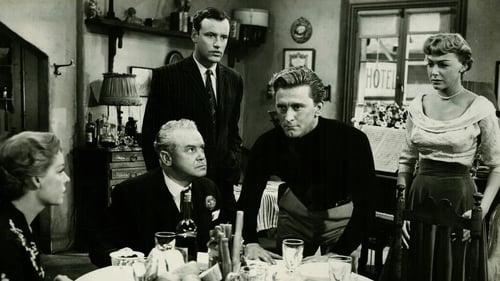
Choreographer
Passengers on an ocean liner recall their greatest loves.
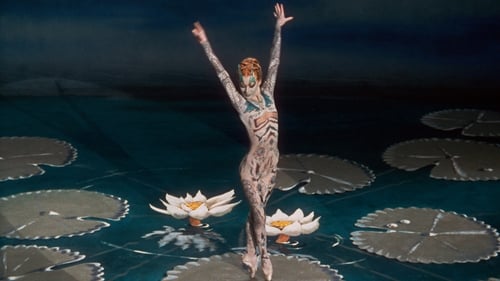
Kleinsach / Cochenille
A young poet named Hoffman broods over his failed romances. First, his affair with the beautiful Olympia is shattered when he realizes that she is really a mechanical woman designed by a scientist. Next, he believes that a striking prostitute loves him, only to find out she was hired to fake her affections by the dastardly Dapertutto. Lastly, a magic spell claims the life of his final lover.

Choreographer
During the Edwardian era, a working-class ballet dancer begins a romance with a wealthy artist against a background of sharp disapproval.

Choreographer
TV presentation of the ballet by Sir Frederick Ashton, performed by the Royal Ballet.













